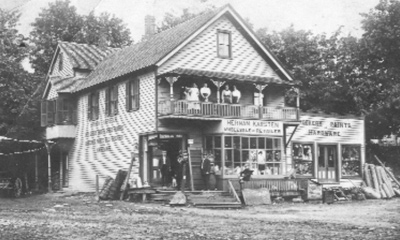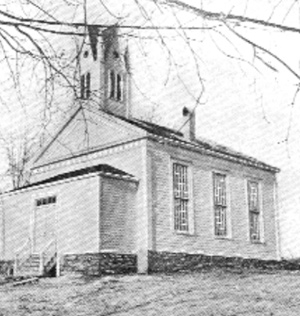
Loyd — Centerville: Reflections of a Forgotten Hamlet
Summer 2011
When determining land boundaries, surveyors tell us there must be a “point of beginning.” That said, we turn our attention to the township of New Paltz.
But first, a little bit of history.
The late Beatrice Hasbrouck Wadlin, former town historian, stated in her book, Times and Tales of the Town of Lloyd:
“Prior to 1845 we were part of the Township of New Paltz, the jurisdiction of which extended from the Shawangunk mountains to the Hudson River.
“In 1842, the New Paltz Town Board divided the Town into two Election Districts – the eastern one of which started at Crozier’s Ditch (near Loyd Cemetery) and Plutarch Road.
“In the fifty eight years preceding the 1845 census of New York State, the township had increased by more than four times its population of 1782. Yet one Town Board had to serve this increased population.
“In most cases the people of the eastern district were not related to the Huguenot families. Many of the residents were newcomers from the other three directions.
“As early as 1833 the people on the eastern part of the town felt the tail was wagging the dog.”

In their opinion they were not getting their fair share of representation from the New Paltz Town Board. “They felt capable of handling public affairs for themselves and had petitioned for a special meeting to create a division of the township.”
On March 23, 1833 twelve local citizens drafted and signed an original notice of application to the State Legislature for a division of the Town of New Paltz. However, it was not until April 15, 1845, that an “act to divide the Town of New Paltz” became Chapter 68 of the Laws of New York of 1845.
“Go West, Young Man.”
Horace Greeley, a prominent New York newspaper editor of the 1800s, is remembered for this famous statement encouraging people to see the country.
Wadlin tells us, “The period following the War of 1812 saw many people traveling west to the prairie states.” One must remember in that time of history, traveling was a very treacherous venture.
Laid out in 1766, New Paltz Road was not designed as you see it today. Travelers had to navigate their covered wagons around and through a myriad of perilous situations–mountains, swamps, and poor roads.
Many people making that trip stopped in Centerville, and being discouraged by the swamp at the foot of the mountain, decided that they had come far enough. They called the range of mountains the ‘Illinois’ , so they could send word that they had reached their destination.”

Loyd, Centerville Methodist Church
“Lloyd” or “Loyd”
Throughout our history, two questions have mystified historians: “From where did the Town of Lloyd derive its name? And Did “Loyd” really exist? Hopefully, the following account can put a little light on the subject.
Bea Wadlin tells us:
“No record or person is known to tell why our Town was named Lloyd. There was a Thomas Lloyd patent in the Libertyville area near New Paltz. Mr. Lloyd was an English merchant and maps up to 1853 show the patent. The founders of our town may have used his name but we do not know why, or if they actually did. There was also a Lloyd Patent at the north end of the Town of Marlborough.”
Additionally, many postcards from the early 1900s are titled “Loyd, the gate to the cemetery on old New Paltz Road near Plutarch Road, reads “Loyd.”
